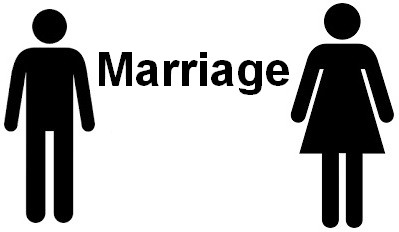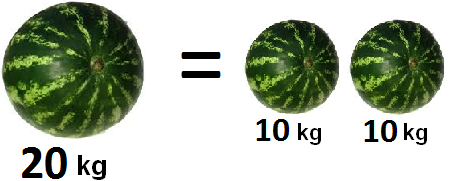Inequalities (Relation operations)
 The word "relation" speaks for itself.
The word "relation" speaks for itself.
Lets start with an example: Object A is related to Object B. Dad has a relation to Mom. This relation is called a marriage:
Examples of relationships abound.
We can say that our beautiful world, which develops harmoniously, also consists of relationships.

If 5 > 3, we say that "five is greater than three" and write it as 5 > 3 (read: five is greater than three). The acute angle of the '>' sign must point toward the smaller number. In our example, the number 3 was smaller than the number 5, so the acute angle of the ratio pointed toward the number 3.
Another example.
The number 11 is smaller than the number 15. This phrase can be written as follows:
11 < 15
In mathematics, you can use inequalities to write laws, formulas, equations, and functions. You can write that one expression is equal to another, or some action is unacceptable with respect to some object, number, law.
The famous phrase "you cannot divide by zero" is written as follows:
![]()
Let us simply say that this expression may contain any numbers instead of a and b. But then it is said that b must not be equal to zero.
Definition. The equal sign = is placed between the quantities and indicates that these quantities are equal to each other.
For example, "five equals five" is written as 5 = 5. It is clear that this two similar digits are equal to each other. In addition to simple numbers, an equal sign can describe more complex expressions, for example: 9 + x + y = 4 + 5 + x + y.
Another example: If one big watermelon weighs 20 kg and two small watermelons weigh 10 kg each, then we can put an equal sign between a watermelon that weights 20 kg and two watermelons with 10 kg weight. This relation can be read as "one watermelon (20 kilograms) equals the weight of two watermelons (10 kilograms each)".
After all, 20 kg = 10 kg + 10 kg.
This observation is equivalent to the mathematical expression "10 + 10 = 20"

Definition. The sign not equal ≠ is placed between values when they are not equal to each other.
For example, 5 ≠ 7. Clearly, five is not equal to seven.
an A is not equal B, a dog is not equal to a cat, a tangerine is not an orange:
A student ≠ an underachiever
dog ≠ cat
mandarin ≠ orange
You can look around you and find many examples of relationships that can be interpreted in terms of mathematics.
Exercises
Most people will solve these problems in their heads easily. However, it is recommended that you do these tasks in a notebook with a pencil in your hand. You should get used to math by solving simple examples.
2. If you find an error or inaccuracy, please describe it.
3. Positive feedback is welcome.